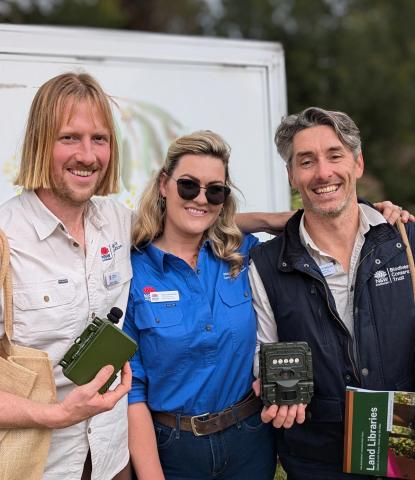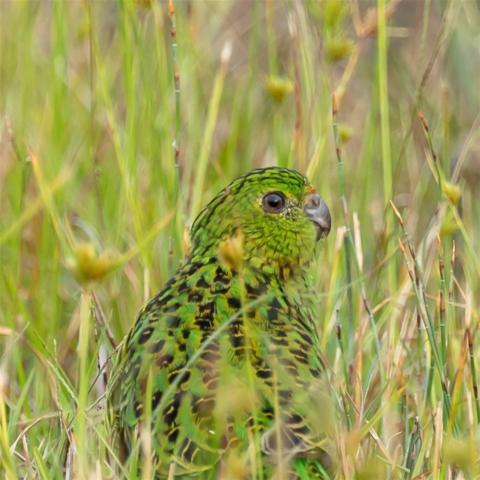Motion cameras and Song Meter sound recorders on private conservation agreement sites across NSW have been busily recording and capturing fauna data as part of our newly launched citizen science project, Land Libraries, with some finds the first recorded sightings of a species in a locality.
Last year about 100 landholders in the Brogo, Bermagui, Kangaroo Valley, Pillar Valley and Wauchope areas each installed two motion cameras and one audio recorder on their NSW Biodiversity Conservation Trust agreement sites.

While the cameras and recorders capture the more elusive species on their agreements, participating landholders are busily collecting more biodiversity data through our partnership with NatureMapr and their data collection app.
Education team senior ecologist Joel Stibbard said the 100 landholders had logged interesting findings.
“By participating in this program, the invited landholders have been contributing vital information to the NSW Government BioNet database, increasing our understanding of biodiversity in the area,” he said.
“We are also helping them better recognise and appreciate the biodiversity values of their land.”
Data from the cameras and Song Meters are currently being analysed and early results are showing important information about the health of the biodiversity found on protected and managed conservation areas.
“We have been able to identify threatened species such as the spotted-tailed quoll and Stephens’ banded snake, which will represent the first BioNet records for these species in the area for a few decades or indeed at all.
“In fact, the Stephens’ banded snake record is a first for the species on the NatureMapr platform.”
“Numerous records of koalas and brush-tailed phascogales are also coming in, indicating our private conservation agreements are a valuable refuge for these species.

“Conversely, we have been identifying lots of pest species including deer and cats, supporting landholder observations and their desire for more assistance in pest management for conservation”.
This data is part of the pilot project implemented in the two NSW Biodiversity Conservation Trust regions. The success of the pilot has resulted in the expansion of the project, with landholders in select areas of the Murray-Riverina region and across the Sydney basin and Hunter regions to be invited to the Land Libraries project in 2025.
Data collected is continually being analysed and verified by experts within the NatureMapr platform, which can be viewed at Land Libraries.
Camera and audio files are uploaded to the platform after analysis with landholders continuing to note their discoveries on the NatureMapr app, which Joel explains is a key aspect of the project.
“We tend to have a good understanding of the species that are more interesting to people, such as birds or mammals, but we lack information on things like fungi, insects and other invertebrates. These species aren’t identified through cameras or audio recorders, so it requires people to consciously observe and record those lesser-known species. That’s where the NatureMapr app comes in.”
Although Land Libraries is a project targeted at select landholders in key areas, the NatureMapr app provides a means for any, and all, citizen scientists to contribute valuable data to government databases.
“Another key outcome of this project is the establishment of a data pathway between NatureMapr and the NSW BioNet database,” Joel said.
“It’s very exciting. There is so much good to come out of a citizen science project like this. It’s a win-win for landholders and for our biodiversity”.